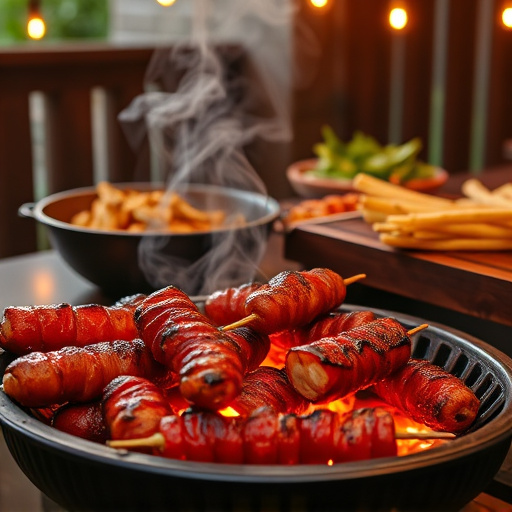Selecting the right BBQ rib cut is crucial for a delicious grill experience. St. Louis-style and baby back ribs offer distinct flavors and textures. Master dry rub seasoning for complex flavor during slow cooking. Explore grilling or slow cooking methods for unique advantages. Smoking breaks down collagen for tender, flavorful ribs. Baste regularly to keep ribs moist. Add sauces or glazes for tailored taste. Rest ribs for 10-15 minutes post-grilling for optimal juiciness.
Unleash your inner BBQ master with this ultimate guide to crafting homemade ribs that’ll have everyone begging for more! From selecting the perfect cut for mouthwatering BBQ ribs to mastering smoking techniques, we’ve got you covered. Learn the art of seasoning with a magical dry rub and choose between grilling or slow cooking. Discover the science behind tender, juicy ribs and elevate your flavor with sauces and glazes. Get ready to impress with this ultimate BBQ rib recipe grill guide!
- Selecting the Perfect Cut for BBQ Ribs
- Dry Rub Magic: Seasoning Your Ribs
- Slow Cooker or Grill: Choosing Your Method
- Mastering the Art of Smoking
- The Science Behind Tender Ribs
- Sauces and Glazes: Adding Flavor
- Resting Time: Letting Ribs Breathe
Selecting the Perfect Cut for BBQ Ribs
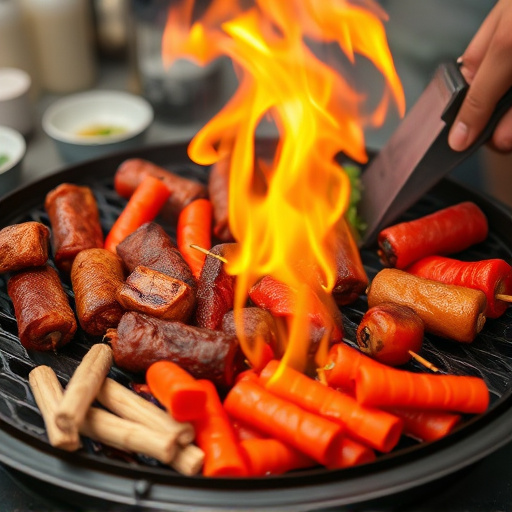
When it comes to BBQ ribs, selecting the right cut is half the battle won. For a classic and mouthwatering BBQ rib recipe, choose between St. Louis-style or baby back ribs. St. Louis-style ribs are known for their meaty, robust flavor as they come from the top of the rib rack with the bone in the center. This cut offers a generous amount of meat between the bones, making it ideal for slow-smoking on the grill. On the other hand, baby back ribs, named for the small bones located at the end, provide a slightly different experience. They are more delicate and tender, often preferred by those who enjoy a lighter, sweeter BBQ rib recipe with a focus on the succulent meat.
Each cut has its unique characteristics, so consider your preference for texture and taste. St. Louis-style ribs excel in flavorful, slow-cooked scenarios, while baby back ribs can be prepared faster and still deliver an exceptional BBQ rib grilling experience. No matter which you choose, selecting the perfect cut ensures that your homemade ribs will satisfy even the pickiest of BBQ enthusiasts.
Dry Rub Magic: Seasoning Your Ribs
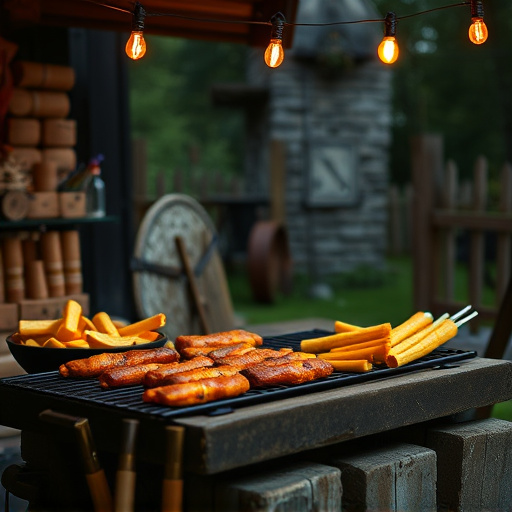
Dry Rub Magic: Seasoning Your Ribs
When it comes to homemade ribs, one of the most crucial steps is mastering the art of seasoning with a dry rub. A well-crafted dry rub can transform your BBQ rib recipe from average to exceptional. The magic lies in balancing spices like paprika, garlic powder, brown sugar, and salt to create a complex flavor profile that mimics the smoky, savory taste of your favorite BBQ joint. By rubbing this spice mix all over your ribs before grilling, you infuse them with a deep, rich flavor that’s hard to resist.
For ultimate results, prepare your dry rub in advance so the spices can meld together. This allows for even distribution and intensifies the flavors during the slow cooking process. Experiment with different ratios of spices to find the perfect blend that suits your taste preferences. Once you’ve perfected your dry rub, it becomes a game-changer for any BBQ rib recipe, ensuring your at-home creations rival those from the best grill masters.
Slow Cooker or Grill: Choosing Your Method
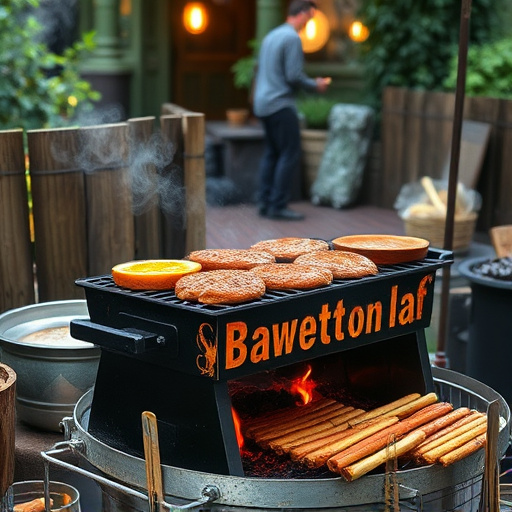
When it comes to cooking ribs, there are two primary methods: using a slow cooker or grilling them directly over heat. For a classic, smoky flavor that’s hard to replicate indoors, many BBQ enthusiasts prefer grilling their ribs. This method allows for direct exposure to hot coals or gas flames, creating those desirable char marks and infusing the meat with a rich, savory taste.
On the other hand, slow cooking in a cooker offers a more hands-off approach, making it ideal for home cooks who want delicious results without constant supervision. Slow cookers gently break down the collagen in the ribs over several hours, ensuring they become tender and succulent. Plus, with the lid on, you capture those flavors, creating a rich BBQ sauce that coats each rib perfectly. So, whether you choose to grill for that authentic outdoor experience or slow cook for convenience, both methods can deliver mouthwatering results for your BBQ rib recipe.
Mastering the Art of Smoking
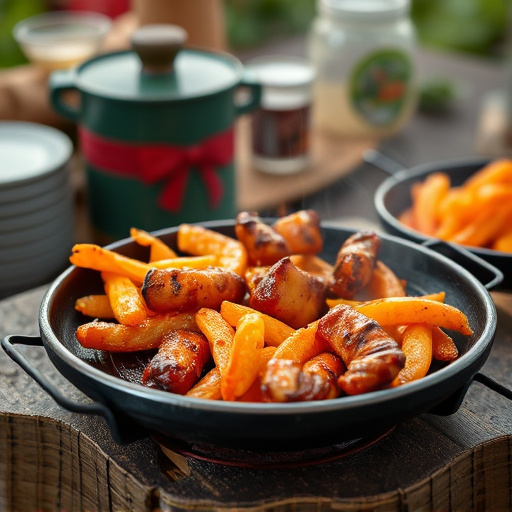
Mastering the art of smoking is key to achieving those tender, flavorful BBQ ribs that melt in your mouth, just like your favorite joint’s. The process involves more than just firing up the grill; it’s about understanding heat and moisture. Low and slow cooking allows the collagen in the ribs to break down, resulting in a juicy, tender end product. Whether you’re using a smoker or a modified grill setup, maintaining a consistent temperature is crucial.
Experiment with different wood chips for smoke flavor—hickory, mesquite, or applewood are popular choices—and don’t be afraid to adjust your technique along the way. The key is patience; let the ribs cook until they reach an internal temperature of 203°F (95°C) for the best, most satisfying BBQ rib experience.
The Science Behind Tender Ribs
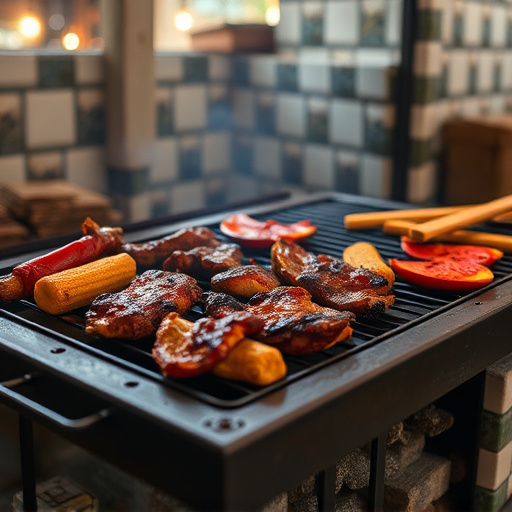
The secret to achieving tender, mouthwatering ribs lies in understanding the science behind their preparation. When cooking ribs on the grill, collagen, a protein found in meat, plays a pivotal role. Collagen is responsible for the rib’s toughness, and it needs to be broken down to transform the ribs into a succulent texture. This process occurs during slow-cooking at high temperatures, allowing the collagen to melt and transform into gelatin, resulting in tender, juicy ribs.
A BBQ rib recipe that incorporates dry rub, slow cooking, and basting techniques ensures optimal tenderness. The dry rub, a blend of spices, enhances flavor and helps break down the collagen naturally. Cooking ribs low and slow allows for even heat distribution, preventing overcooking and keeping the meat moist. Baste the ribs regularly with saucy or oily ingredients to add moisture, locking in flavors and accelerating the gelatinization process, ultimately creating ribs that compete with any BBQ joint’s offering.
Sauces and Glazes: Adding Flavor
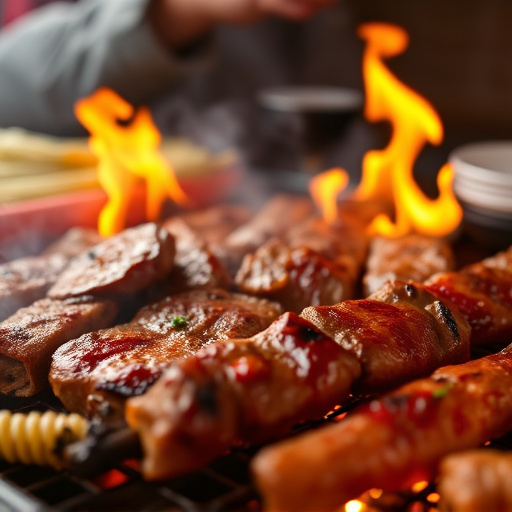
Sauces and glazes are essential components that elevate homemade BBQ rib recipes from good to great. When grilled, ribs naturally develop a smoky flavor, but adding a sauce allows you to customize the taste profile. Whether you prefer a tangy tomato-based sauce, a sweet and sticky glaze, or a spicy kick, there’s a recipe to suit every palate.
Experimenting with different ingredients is key. Common additions include brown sugar, vinegar, chili powder, garlic, and various herbs. These not only enhance the flavor but also contribute to the rib’s tenderness. For a classic touch, opt for a simple BBQ sauce made with ketchup, mustard, and a hint of smoke. Alternatively, try a more adventurous glaze by combining honey, soy sauce, and a sprinkle of red pepper flakes for an extra punch.
Resting Time: Letting Ribs Breathe
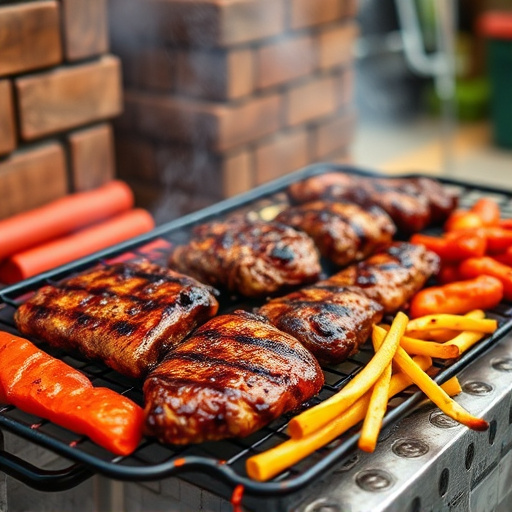
After carefully grilling your ribs to perfection, a crucial step in achieving that mouthwatering, slow-cooked flavor is allowing them to rest. This resting period, often overlooked, is akin to letting the flavors marinate and settle, creating a symphony of taste. During this time, the juices redistribute throughout the ribs, ensuring each bite is juicy and tender.
Think of it as a respite for your ribs, a chance to catch their breath after the intense heat of the grill. This simple act enables you to achieve that signature BBQ rib recipe quality that can rival any joint. So, resist the urge to serve them immediately; instead, let them rest for 10-15 minutes before slicing, ensuring an unforgettable BBQ experience.
